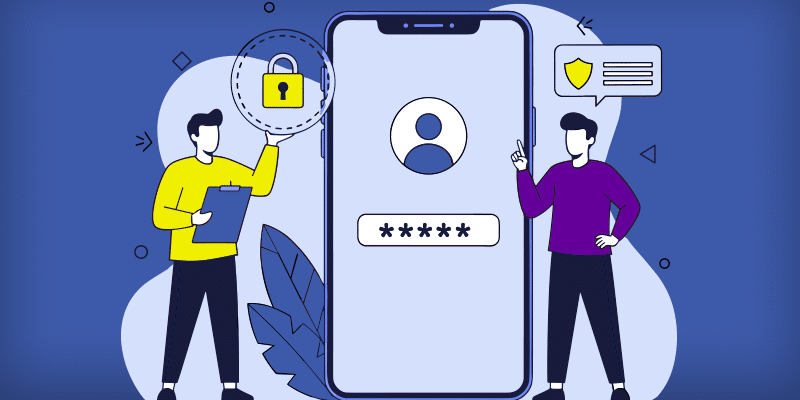The modern IT admin’s guide to smarter user access reviews

I have yet to find a person who loves User Access Reviews (UARs)—and I don’t blame them. For the modern IT admin, they often feel like a necessary evil—a massive, manual slog that you tackle a few times a year, all in the name of compliance and keeping the auditors happy. It’s the digital equivalent of sifting through a mountain of paper records.
But here’s the kicker: The old “quarterly spreadsheet shuffle” is a huge security risk, and frankly, it’s just not cutting it in a cloud-first world. We’re dealing with rapid user turnover, SaaS sprawl, and more privileged accounts than ever before. If your UAR process is still stuck in 2010, you’ve got “access debt” building up, and that’s a zero-day waiting to happen.
It’s time to flip the script. User Access Reviews don’t have to be a painful audit event; they should be a seamless part of your continuous security posture.
Here’s your no-nonsense guide to moving from “UAR headache” to “smarter identity governance” and general access management best practices.
1. Stop reviewing every single thing
The biggest time-sink is the need to review everything with the same level of scrutiny. That read-only access to the company blog archive? Probably fine. That global admin role with standing access to your primary cloud environment? That needs continuous monitoring.
The fix? Prioritize your pain points.
First, access management best practices include categorizing your system by risk.
- High-risk (Sensitive data): Financial systems, HRIS, PII databases, Core Infrastructure (AWS/Azure/GCP admin roles).
- Medium-risk (Internal apps): CRM, Dev/Test environments, internal file shares.
- Low-risk (General tools): Slack channels, basic productivity software.
Secondly, focus on privileged access. Any account with “root,” “admin,” or equivalent access is the top priority. These are the crown jewels for an attacker. They should never have “standing access”—implement Just-In-Time (JIT) access where privileges are granted only when needed and automatically revoked.
2. Ditch the spreadsheets and automate the pain
Manual data collection and tracking are where human errors and exhaustion creep in. Exporting user lists from a dozen different systems and then trying to merge them into a coherent spreadsheet? That’s not IT, that’s artisanal security debt.
Adopt an identity governance and administration mindset. Centralizing your data into a single Identity Provider (IdP), like Okta or Microsoft Entra ID (formerly Azure AD), and pairing it with a robust SaaS Management Platform (SMP), serves as a strong duo against security threats and wasted spend.
With BetterCloud, users can enable various triggers to kick off a workflow. Whether a new user is created in your HRIS, like BambooHR or Workday, or a mid-lifecycle change occurs, like a promotion or special project commences, BetterCloud can trigger based on this change and assign the user to new groups, folders, and/or applications.
Never forget to offboard a contractor again. Automate onboarding and offboarding of contractors with BetterCloud.
3. Make managers own their access decisions
If you, the IT admin, are the one certifying access for the Finance department, you’re just guessing. You don’t know if Jane in accounting still needs that specific folder access from a project three months ago—her manager does. The IT team should own the process and the tool, but the business owner must own the decision.
Time to delegate and educate.
- Empower data/system owners: Identify the non-IT owner for every critical application or data set. They are the final authority on who needs access.
- Keep it simple for reviewers: The review interface must be dead simple. Reviewers shouldn’t need a four-hour training session. They need a dashboard that says: “User X has access A, B, and C. Approve/Deny/Not Sure.” Provide them with context, not raw data—show them when the access was last used, or if it violates their standard role template.
- Training is key: A quick, mandatory training for all reviewers on why this matters (Insider Threat, Compliance Fines, Job Security) is crucial. Make them feel like the first line of defense, not the last line of clerical workers.
BetterCloud hot tip! Loop in managers to access decisions in your BetterCloud workflows via email or slack.
4. Enforce “least privilege” as a lifestyle
Access reviews are often reactive—you’re cleaning up a mess that’s already been made (aka privilege creep). A smarter process integrates access review principles right into your daily provisioning.
The shift to role-based access control (RBAC) starts with standardizing everything. Define clear, documented roles and what access each role should have.
And the ultimate beauty of RBAC? Provisioning by role, not by user. When a new user is hired or an existing user changes roles, they get the defined role access – no exceptions without a clear, time-bound reason.
Finally, you want to review these roles periodically. If 50 people were approved for an access that wasn’t in their standard role, you may need to update the role definition. Access reviews should feed back into your RBAC definitions.
Access management best practices
While a streamlined UAR process is crucial for cleaning up “access debt,” true identity governance requires weaving security into the daily fabric of IT operations. These principles go beyond the periodic review to create a continuous security posture.
To shift from reactive compliance to proactive security, you must implement three foundational practices:
The bottom line
A smarter user access review process is not about doing more manual work; it’s about shifting the burden and working smarter. You’re moving from a frantic, manual compliance check to a strategic, automated system that enforces the Principle of Least Privilege.
Stop wasting your time exporting spreadsheets. Automate the review, focus on the high-risk accounts, and put the decision-making power where the context is—with the business managers. Your auditors will be happier, your attack surface will shrink, and you’ll get a lot of that time back.
BetterCloud is here to help! Start automating user access and other IT work in just a few weeks. Take action.



